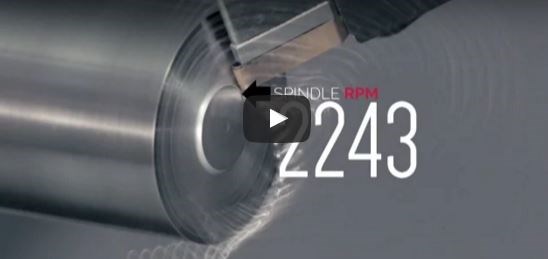Video: Chatter Control in Spindle Speed Variation
Instead of running at a consistent speed, a CNC parameter enables the lathe’s spindle speed to automatically cycle up and down through a range. The process, therefore, spends only an instant at any problematic speed.
Share



Chatter is self-excited vibration. We often think of controlling chatter as a challenge that relates to milling. However, chatter can be a factor in turning, too. This video from Haas Automation describes “Spindle Speed Variation,” a parameter in the company’s CNC that addresses chatter on lathes.
As the name implies, this parameter allows the lathe spindle speed to automatically vary. The user sets the speed variation envelope (say, ±100 rpm) along with the period of time for cycling through this range (in increments of 0.1 second). In the video, a lathe running at 2,000 rpm ±100 rpm is seen under a strobe light. The strobe picks up the speed variation, making it look as though the spindle is rocking back and forth.
This solution works to overcome chatter because chatter is speed-specific. Certain spindle speed values resonate with the overall machining system. Varying the rpm potentially stabilizes the cut because it means that the lathe spends only an instant at a time at any problematic speed.
The video illustrates the impact by showing the turning of a long bar, unsupported by a tailstock. The bar chatters when turned at consist speed, but then can be turned precisely and quietly once the variable speed is turned on.

Related Content
-
10 Robotic Solutions You Can Find at IMTS 2026
Discover how today’s robots and cobots are making it easier than ever to automate tasks, free up skilled workers, and run machines unattended – even in small and midsized shops.
-
Cutting Part Programming Times Through AI
CAM Assist cuts repetition from part programming — early users say it cuts tribal knowledge and could be a useful tool for training new programmers.
-
Can AI Replace Programmers? Writers Face a Similar Question
The answer is the same in both cases. Artificial intelligence performs sophisticated tasks, but falls short of delivering on the fullness of what the work entails.






















